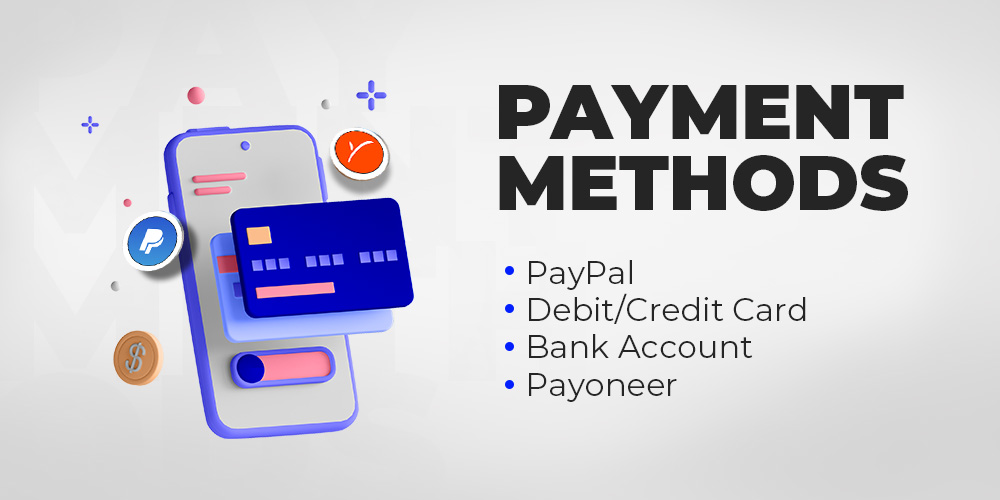Understanding eBay’s Payment Policies: What You Need to Know
As an eBay seller, understanding the platform’s payment policies is crucial to ensuring a smooth and successful transaction. One of the most common questions sellers have is “How long does a buyer have to pay on eBay?” The answer to this question is essential in managing expectations and avoiding potential issues. According to eBay’s payment policies, buyers are expected to pay for their purchases within a specified timeframe, which is typically 4 days from the date of purchase. However, this timeframe can vary depending on the seller’s payment terms and the buyer’s location.
eBay’s payment policies are designed to protect both buyers and sellers. The platform’s Money Back Guarantee ensures that buyers can shop with confidence, knowing that they can return an item if it doesn’t match the description or is not as expected. For sellers, understanding the payment policies can help them manage their inventory, shipping, and customer service more effectively. By setting clear payment expectations and providing detailed payment instructions, sellers can reduce the risk of non-payment and ensure a positive transaction experience.
In addition to understanding the payment policies, sellers should also be aware of the consequences of non-payment. If a buyer fails to pay for an item, the seller can file an Unpaid Item case, which can result in the buyer being blocked from purchasing on eBay. Sellers should also be aware of the potential impact on their feedback and ratings, as non-payment can negatively affect their reputation on the platform.
By understanding eBay’s payment policies and setting clear payment expectations, sellers can minimize the risk of non-payment and ensure a successful transaction. In the next section, we will discuss how to set clear payment expectations for your buyers and provide tips on how to communicate effectively with them.
How to Set Clear Payment Expectations for Your Buyers
Setting clear payment expectations is crucial to ensuring a smooth transaction on eBay. By clearly communicating your payment terms, you can reduce the risk of non-payment and minimize disputes with buyers. So, how long does a buyer have to pay on eBay? The answer to this question should be clearly stated in your payment instructions.
To set clear payment expectations, start by specifying the payment methods you accept, such as PayPal, credit cards, or bank transfers. You should also clearly state the payment deadline, which is typically 4 days from the date of purchase. Additionally, provide detailed payment instructions, including any specific requirements, such as payment within 24 hours of purchase.
It’s also essential to communicate your payment expectations clearly in your item description and payment instructions. Use simple and concise language to avoid any confusion. For example, you can state: “Payment is due within 4 days of purchase. Please pay via PayPal or credit card within 24 hours of purchase to ensure timely shipping.”
By setting clear payment expectations, you can reduce the risk of non-payment and ensure a positive transaction experience. Additionally, providing excellent customer service and responding promptly to buyer inquiries can also help to build trust and increase customer satisfaction.
In the next section, we will discuss the consequences of non-payment on eBay, including the process for filing an Unpaid Item case and the potential impact on seller feedback and ratings.
The Consequences of Non-Payment: What Happens When Buyers Don’t Pay
Non-payment is a serious issue on eBay, and it can have significant consequences for both buyers and sellers. When a buyer fails to pay for an item, the seller is left with an unpaid item and the potential for a negative impact on their feedback and ratings. So, what happens when a buyer doesn’t pay on eBay?
According to eBay’s policies, if a buyer fails to pay for an item, the seller can file an Unpaid Item case. This case is used to notify eBay of the non-payment and to request assistance in resolving the issue. The seller can file an Unpaid Item case through the eBay website or mobile app, and it typically takes a few minutes to complete.
Once an Unpaid Item case is filed, eBay will send a notification to the buyer, reminding them to pay for the item. If the buyer still fails to pay, the seller can escalate the case to eBay’s customer support team. The customer support team will then work with the seller to resolve the issue and may take action against the buyer, including blocking their account.
The consequences of non-payment can be severe for buyers, including a negative impact on their feedback and ratings. Repeated instances of non-payment can also lead to account suspension or termination. For sellers, non-payment can result in lost revenue and a negative impact on their feedback and ratings.
It’s essential for sellers to understand the consequences of non-payment and to take steps to prevent it. By setting clear payment expectations, providing excellent customer service, and using eBay’s payment tracking features, sellers can reduce the risk of non-payment and ensure a positive transaction experience.
In the next section, we will discuss how to handle unpaid items on eBay, including sending reminders, filing an Unpaid Item case, and resolving disputes.
How to Handle Unpaid Items on eBay: A Step-by-Step Guide
Handling unpaid items on eBay can be a frustrating experience, but it’s essential to follow the correct procedures to resolve the issue efficiently. In this section, we will provide a step-by-step guide on how to handle unpaid items on eBay, including sending reminders, filing an Unpaid Item case, and resolving disputes.
Step 1: Send a Reminder to the Buyer
If a buyer fails to pay for an item, the first step is to send a reminder to the buyer. eBay provides a reminder feature that allows sellers to send a notification to the buyer, reminding them to pay for the item. To send a reminder, go to the “Sold” section of your eBay account, click on the “Unpaid” tab, and select the item. Then, click on the “Send reminder” button.
Step 2: File an Unpaid Item Case
If the buyer still fails to pay after sending a reminder, the next step is to file an Unpaid Item case. To file an Unpaid Item case, go to the “Sold” section of your eBay account, click on the “Unpaid” tab, and select the item. Then, click on the “File an Unpaid Item case” button. eBay will then send a notification to the buyer, reminding them to pay for the item.
Step 3: Resolve the Dispute
If the buyer still fails to pay after filing an Unpaid Item case, the next step is to resolve the dispute. eBay provides a dispute resolution process that allows sellers to resolve disputes with buyers. To resolve a dispute, go to the “Sold” section of your eBay account, click on the “Unpaid” tab, and select the item. Then, click on the “Resolve dispute” button.
By following these steps, sellers can efficiently handle unpaid items on eBay and minimize the risk of non-payment. In the next section, we will discuss best practices for reducing unpaid items on eBay, including using eBay’s payment tracking features, setting clear payment expectations, and providing excellent customer service.
Best Practices for Reducing Unpaid Items on eBay
Reducing unpaid items on eBay requires a combination of effective communication, clear payment expectations, and excellent customer service. By implementing the following best practices, sellers can minimize the risk of non-payment and ensure a positive transaction experience for their buyers.
1. Use eBay’s Payment Tracking Features
eBay’s payment tracking features allow sellers to monitor payment status, send reminders, and automate payment follow-ups. By using these features, sellers can stay on top of payments and reduce the risk of non-payment.
2. Set Clear Payment Expectations
Clearly communicating payment expectations is essential to reducing unpaid items. Sellers should specify payment deadlines, provide detailed payment instructions, and ensure that buyers understand the payment terms.
3. Provide Excellent Customer Service
Providing excellent customer service is critical to building trust and ensuring a positive transaction experience. Sellers should respond promptly to buyer inquiries, provide accurate information, and resolve disputes efficiently.
4. Use eBay’s Seller Hub
eBay’s Seller Hub provides a range of tools and features to help sellers manage their sales, including payment tracking and dispute resolution. By using the Seller Hub, sellers can streamline their sales process and reduce the risk of non-payment.
5. Offer Flexible Payment Options
Offering flexible payment options can help reduce unpaid items by making it easier for buyers to pay. Sellers should consider offering multiple payment options, including PayPal, credit cards, and bank transfers.
By implementing these best practices, sellers can reduce the risk of non-payment and ensure a positive transaction experience for their buyers. In the next section, we will discuss how to use eBay’s payment tracking features to your advantage.
What to Do When a Buyer Claims They Didn’t Receive an Item
When a buyer claims they didn’t receive an item, it can be a frustrating experience for both the buyer and the seller. However, by following the correct procedures, sellers can resolve the issue efficiently and maintain a positive reputation on eBay.
Step 1: Respond to the Buyer’s Inquiry
When a buyer claims they didn’t receive an item, the first step is to respond to their inquiry. Sellers should acknowledge the buyer’s concern and ask for more information about the issue.
Step 2: Provide Proof of Shipping
To resolve the issue, sellers should provide proof of shipping, including the tracking number and a copy of the shipping receipt. This will help to verify that the item was shipped and delivered to the buyer.
Step 3: Resolve the Dispute
If the buyer still claims they didn’t receive the item, sellers should resolve the dispute through eBay’s dispute resolution process. This process allows sellers to communicate with the buyer and resolve the issue efficiently.
Best Practices for Handling Claims of Non-Receipt
To minimize the risk of claims of non-receipt, sellers should follow best practices, including:
1. Use a trackable shipping method, such as USPS or UPS, to ensure that the item can be tracked and verified.
2. Provide clear and accurate shipping information, including the tracking number and estimated delivery time.
3. Respond promptly to buyer inquiries and concerns to resolve the issue efficiently.
By following these steps and best practices, sellers can resolve claims of non-receipt efficiently and maintain a positive reputation on eBay.
How to Use eBay’s Payment Tracking Features to Your Advantage
eBay’s payment tracking features are designed to help sellers manage their sales and reduce the risk of non-payment. By using these features, sellers can monitor payment status, send reminders, and automate payment follow-ups.
Benefits of Using eBay’s Payment Tracking Features
1. Monitor Payment Status: eBay’s payment tracking features allow sellers to monitor the payment status of their sales in real-time. This means that sellers can quickly identify any issues with payment and take action to resolve them.
2. Send Reminders: eBay’s payment tracking features allow sellers to send reminders to buyers who have not made payment. This can help to prompt buyers to make payment and reduce the risk of non-payment.
3. Automate Payment Follow-ups: eBay’s payment tracking features allow sellers to automate payment follow-ups. This means that sellers can set up automatic reminders to be sent to buyers who have not made payment, reducing the need for manual intervention.
How to Use eBay’s Payment Tracking Features
1. Access the Seller Hub: To access eBay’s payment tracking features, sellers need to log in to the Seller Hub. From here, sellers can view their sales and monitor payment status.
2. Set Up Payment Tracking: Sellers can set up payment tracking by going to the “Payment” section of the Seller Hub. From here, sellers can select the payment methods they want to track and set up automatic reminders.
3. Monitor Payment Status: Sellers can monitor payment status by going to the “Payment” section of the Seller Hub. From here, sellers can view the payment status of their sales and take action to resolve any issues.
By using eBay’s payment tracking features, sellers can reduce the risk of non-payment and improve their overall sales performance. In the next section, we will discuss how to maximize eBay sales by reducing unpaid items and increasing customer satisfaction.
Maximizing Your eBay Sales: Tips for Reducing Unpaid Items and Increasing Customer Satisfaction
To maximize your eBay sales, it’s essential to reduce unpaid items and increase customer satisfaction. By following these tips, you can improve your sales performance and build a positive reputation on eBay.
Tip 1: Offer Excellent Customer Service
Providing excellent customer service is critical to building trust and increasing customer satisfaction. Respond promptly to buyer inquiries, provide accurate information, and resolve disputes efficiently.
Tip 2: Provide Clear Payment Instructions
Clear payment instructions can help reduce unpaid items and improve customer satisfaction. Provide detailed payment instructions, including payment deadlines and accepted payment methods.
Tip 3: Use eBay’s Payment Tracking Features
eBay’s payment tracking features can help you monitor payment status, send reminders, and automate payment follow-ups. By using these features, you can reduce the risk of non-payment and improve customer satisfaction.
Tip 4: Set Clear Payment Expectations
Setting clear payment expectations can help reduce unpaid items and improve customer satisfaction. Specify payment deadlines, provide detailed payment instructions, and ensure that buyers understand the payment terms.
Tip 5: Provide Proof of Shipping
Providing proof of shipping can help resolve disputes and improve customer satisfaction. Keep records of shipping, including tracking numbers and delivery confirmation.
By following these tips, you can maximize your eBay sales, reduce unpaid items, and increase customer satisfaction. Remember to always provide excellent customer service, clear payment instructions, and use eBay’s payment tracking features to your advantage.





